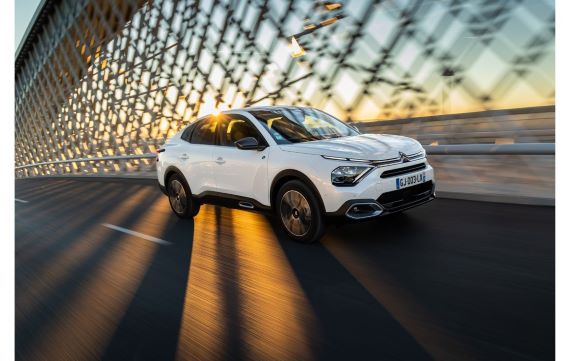
Which electric model takes the least amount of time to cover 1,000 km?
London, 08 February 2024, (Oilandgaspress): –Citroën collaborated with UTAC, a leading group in the field of automotive tests, validations, and certifications, globally recognized. The question posed to them was simple: how much time does it take to cover 1,000 km with an electric vehicle, specifically the ë-C4X? This is the question a customer faces when confronted with specifications such as battery size, certified range, weight, charging speed, etc., without fully understanding how it translates into real-world usage. To provide reference points, UTAC was tasked with conducting the test under strictly similar conditions with vehicles from the competitive field of ë-C4 and ë-C4X: Renault Mégane e-Tech, Volkswagen ID 3, and MG 4.
The Citroën ë-C4 X emerged as the fastest in completing the 1,000 km, with a total time, including recharging, of 11 hours and 57 minutes. The competitors took between 14 and 67 minutes longer to cover the same distance. The results, as indicated by UTAC’s measurements, are explained by lower energy consumption and optimized charging times, validating the technical choices made for ë-C4 X and, by extension, ë-C4.
In addition to efficient products, Citroën offers the e-ROUTES application, which makes every long electric journey even more convenient. Directly connected to the vehicle’s data, driving conditions, and the status of charging stations, this personal assistant optimizes the customer’s route in real-time. This combination of a high-performance product and an intelligent application is particularly well-suited for the rapid development of the charging network..
“The test conducted by UTAC validates Citroën’s strategic choices: a reasonably sized battery that, while ensuring a range of over 400 km, reduces costs, consumption, and enables long-distance travel without concern, thanks to the efficiency of fast charging. Driving the ë-C4 on a daily basis, I confirm this efficiency in real-life conditions during my travels.” T Koskas, Citroën CEO
The four models that were tested by UTAC on the Mortefontaine circuit are as follows:
| Model | Citroën ë-C4 X | MG 4 | Renault Mégane | Volkswagen ID 3 |
| Battery (capacity) | 54 kWh | 64 kWh | 60 kWh | 58 kWh |
| Range WLTP (mixt cycle) | 420 km | 435 km | 450 km | 425 km |
| Weight | 1 603 kg | 1 694 kg | 1 670 kg | 1 790 kg |
These models were tested over two days, under identical weather conditions, following the same protocol:
- Driving at a stabilized speed of 120 km/h on the high-speed ring of the Mortefontaine circuit.
- At the beginning of the test, the vehicle is charged to 100% State of Charge (SOC) battery.
- Driving is stopped when the battery reaches 10% charge level.
- The vehicle is then recharged up to 80%. Recharges were alternated between a 100 kW charging station and a 50 kW charging station, in accordance with the site’s capacity.
- This sequence of driving and recharging is repeated until reaching the total distance of 1000 km.
RESULTS
Every 100 kilometers, the drivers recorded the average consumption (kWh/100km):
| Citroën ë-C4 X | Concurrent 1 | Concurrent 2 | Concurrent 3 | |
| 100 | 19.6 | 20.2 | 21.1 | 23.3 |
| 200 | 19.4 | 20.2 | 20.6 | 23.1 |
| 300 | 19.4 | 20.3 | 20.7 | 23.0 |
| 400 | 19.4 | 20.4 | 20.7 | 23.0 |
| 500 | 19.5 | 20.6 | 20.9 | 23.1 |
| 600 | 19.6 | 21.0 | 21.0 | 23.1 |
| 700 | 19.8 | 21.3 | 21.0 | 23.2 |
| 800 | 20.0 | 21.6 | 21.3 | 23.3 |
| 900 | 20.1 | 21.8 | 21.5 | 23.3 |
| 1000 | 20.2 | 21.9 | 21.6 | 23.4 |
Note: Consumption rates degrade with decreasing temperatures towards the end of the day.
In total, the drivers had to make 5 stops to recharge the batteries, alternating between the 50 kW and 100 kW charging stations, explaining the different charging times.
Information Source: Read More “
Energy Monitors , Electric Power , Natural Gas , Oil , Climate , Renewable , Wind , Transition , LPG , Solar , Electric , Biomass , Sustainability , Oil Price , Electric Vehicles,

